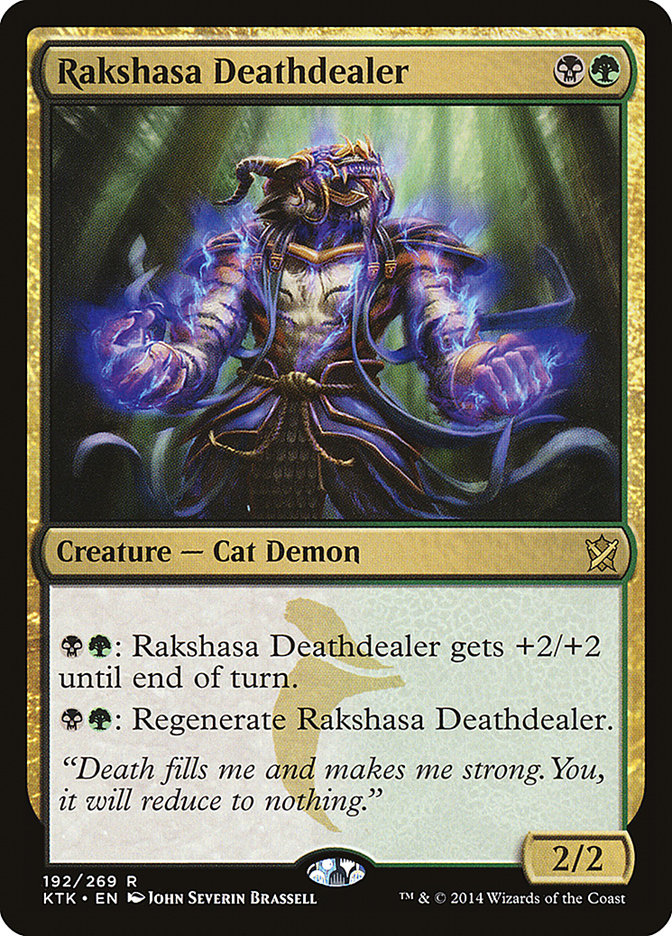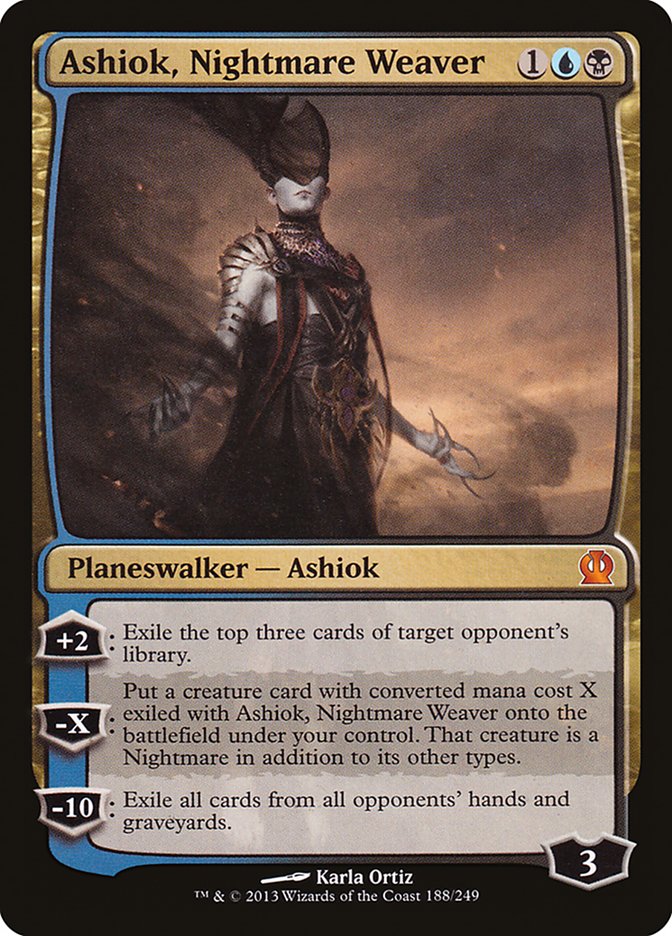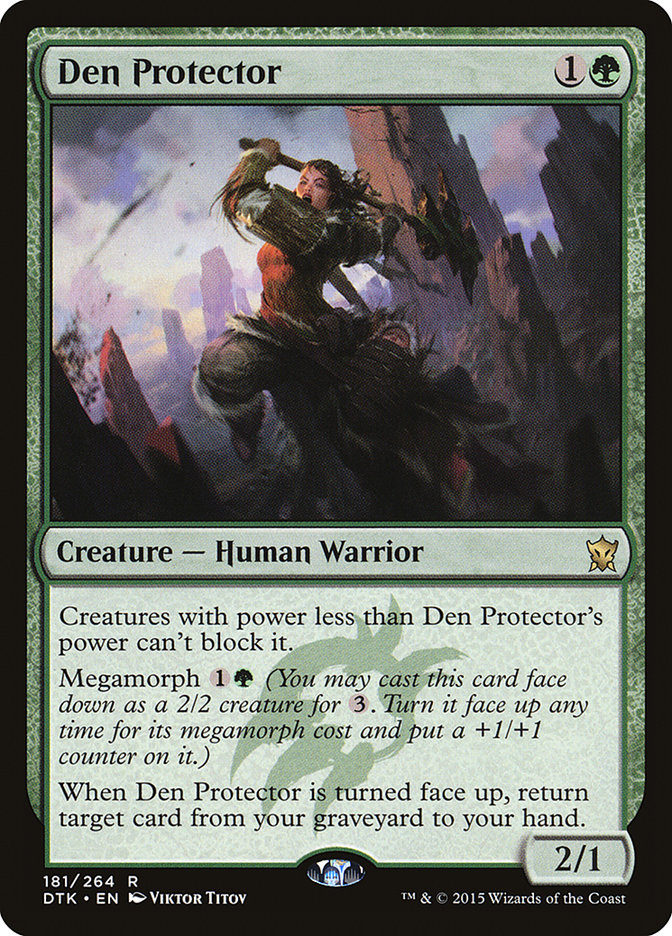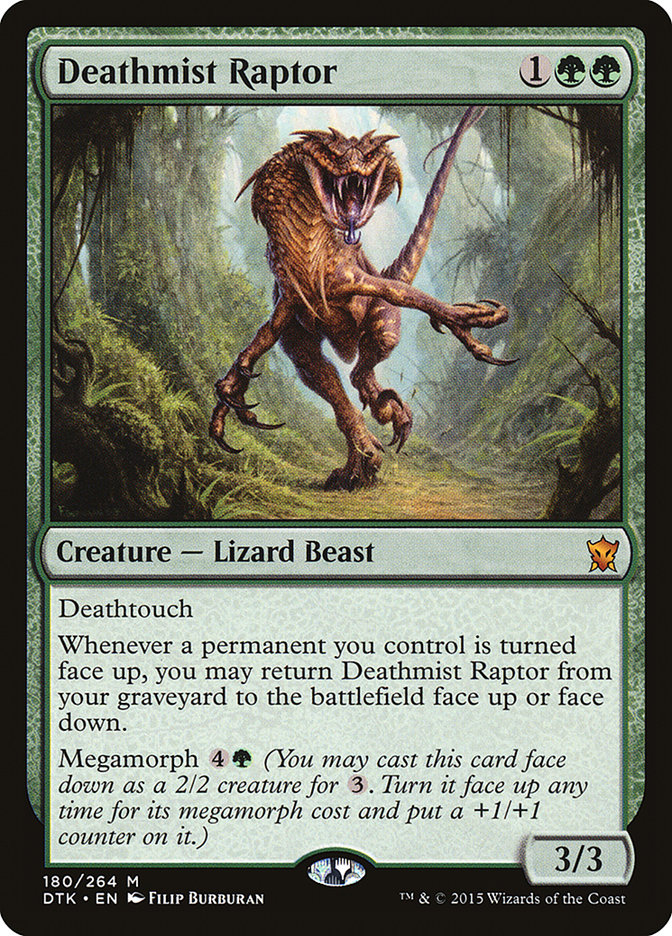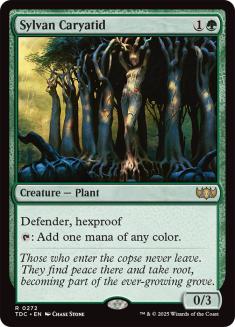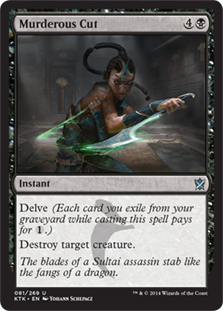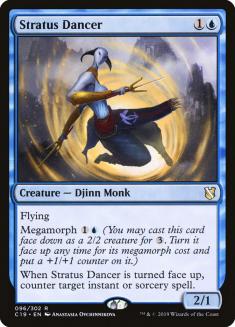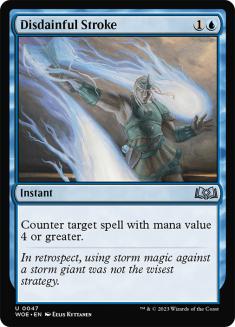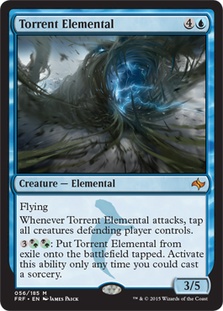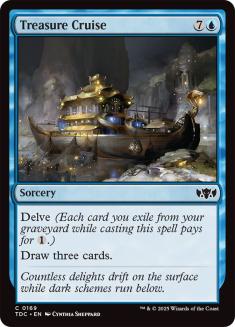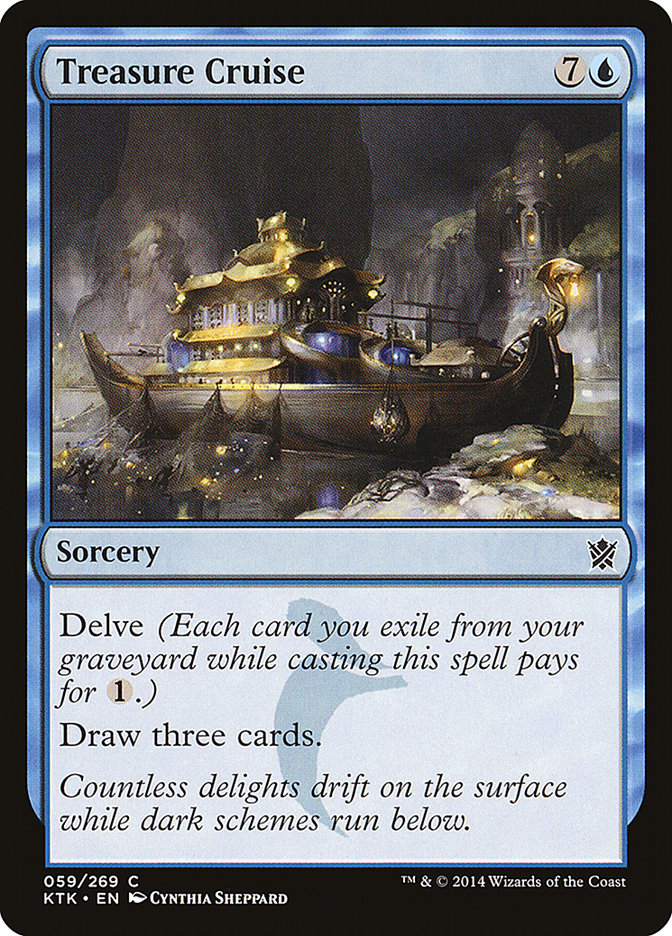It is a dark time for those of us that prefer the finer things in life: turning creatures sideways and leaving powerful cards stranded in a helpless
opponent’s hand. The rise of Esper Dragons reached a new level last weekend at GP Krakow with five copies making the top 8, along with a copy of U/B
Control. Even more impressive was that this performance came in a tournament where red aggro was the most played deck on Sunday. As it turns out,
Counterspell and Anticipate Dragon make for powerful cards.
I, on the other hand, have spent the past few weeks exploring a deck that I think has the tools to compete against Esper Dragons and its natural predator,
Atarka Red. That deck is Sultai Reanimator.
As a Courser/Caryatid deck with early defensive elements, a smattering of removal, and a game ending threat in Whip of Erebos, Sultai Reanimator is
naturally well-positioned against aggressive red decks. It also has historically been favored against opposing midrange decks because of the various trumps
it cheats into play with Whip of Erebos. Moreover, Sidisi, Undead Vizier is a powerful new tool in these attrition matchups, giving you more consistent
access to trump cards without having to play too many copies that may clog your draws in the earlygame.
Against the control decks, however, I have found the Sultai deck unable to consistently get ahead on board early since it typically uses its early turns
establishing its mana with Sylvan Caryatid and Satyr Wayfinder rather than deploying threats. Because of this, the control player is able to set up a
counter/removal shield that the Sultai deck must work to break through, all while worrying about the threat of Dragonlord Ojutai, Silumgar, the Drfting
Death, or Ugin, the Spirit Dragon. Going long, these threats will invariably take over the game so long as the Sultai player does not create an
overwhelming board presence.
Thus as they are currently constructed, while the Sultai deck has a lot of good individual cards for the matchup (Disdainful Stroke, Thoughtseize, Whip of
Erebos), it is unable to leverage them with a coherent gameplan that is effective against the new breed of control decks, an obvious problem in the current
control heavy metagame. Today I will go through the possible plans Sultai Reanimator has at its disposal and how your choice of plan in this matchup
informs deckbuilding and in-game tactical decisions.
Plan 1: Aggression
As I mentioned above, a primary issue with the control matchup is the inability for Sultai Reanimator to establish a board presence before the control deck
establishes a counter/removal shield. We can change this dynamic by bringing in some cheap threats that are capable of forcing the control player to act
first with their reactive spells, allowing us to use our counterspells proactively or simply deploy another threat as necessary. This puts the control deck
under constant pressure and ideally does not allow them an appropriate window to resolve a key card draw spell (i.e. Dig Through Time) or large threat
(i.e. Dragonlord Ojutai) that will pull them ahead.
Looking for possible candidates for such a threat led me to two appealing options:
Rakshasa can come down under a counter wall and dodges one piece of two-mana removal in Ultimate Price. Once you untap with it in play, it is very
difficult to remove from the board, except with Foul-Tongue Invocation. Deathdealer also plays well with the plan of deploying your threats slowly since it
gives you another productive outlet for your mana.
Ashiok, while slightly slower than Rakshasa, offers to completely take over the game if left unchecked, and dodges every removal spell except Hero’s
Downfall. The threat of Ashiok is strong enough to force the opponent to deploy a Dragon earlier than they may like, which we can take advantage of with
Disdainful Stroke and our own Hero’s Downfalls. The planeswalker can also come in against opposing midrange decks, so it is a good option if you feel tight
on sideboard space.
The plan of going underneath requires us to defend these threats, making Negate a more attractive option relative to Disdainful Stroke, even if the latter
can counter a threatening Dragon that the former cannot. I still prefer Disdainful Stroke overall because of its applications in other matchups, but in a
standard list (such as the one from last weekend’s Providence Open) I had moved to playing zero copies of Negate in favor of more copies of Disdainful
Stroke. With this plan I believe a two/one Stroke/Negate split is better, and adding a fourth counterspell would be a very difficult decision between the
third Stroke and second Negate.
Point discard spells (i.e. Thoughtseize and Duress) are also good for this plan since they provide an easy way to force open a window to land your threat
if one does not naturally present itself. As such, I would typically save these when playing until you have a threat you want to force through; the counter
and discard spells are used more for protection in this strategy than anything else.
Since they do not protect your threat once it is in play (unless your opponent was forced to tap out for a card draw spell on their turn that found the
appropriate answer), I do not advocate overloading on these, but the full four Thoughtseizes are great, and I could easily see playing a Duress, which has
applications against the red aggro decks that have incorporated Dragon Fodder and Hordeling Outburst in addition to their many burn spells.
Plan 2: Resilience
Rather than use counters and discard to protect our threats, another option is to select our threats so that opposing removal is rendered ineffective or
completely useless. While a more elegant and thus desirable solution, this is obviously difficult when facing generic removal like Hero’s Downfall and
Dissolve. But it is not impossible with a powerful new pair of creatures from Dragons of Tarkir.
They are going to be best friends for a while, so get used to it.
This pair has already made its presence in the metagame felt in Craig Wescoe’s Bant Midrange deck from the Pro Tour, as they can provide a
near endless supply of threats when you use one Den Protector to return another along with any Deathmist Raptors in your graveyard. The natural milling of
the Sultai Reanimator deck allows you to find more Deathmist Raptors in a given game, making this pair even more potent. Both cards are reasonably
inexpensive to get into play, making them more easily protected by both counter and discard spells, so this idea is clearly worth exploring (and many are
if you examine MTGO decklists or Willy Edel’s deck from the
Pro Tour).
The major issue posed by it is space in the deck itself. Without any other reasonable morphs, I would like to play the full set of each, which really
requires rebuilding the deck from the ground up. This is the list I would start with:
Creatures (26)
- 1 Hornet Queen
- 4 Sylvan Caryatid
- 3 Courser of Kruphix
- 4 Satyr Wayfinder
- 4 Sidisi, Brood Tyrant
- 2 Sidisi, Undead Vizier
- 4 Den Protector
- 4 Deathmist Raptor
Lands (24)
Spells (10)

With this list, I would typically sideboard as follows against control:
Out:
In:
Stratus Dancer replaces Negate as a supplementary counterspell because of its synergy with Deathmist Raptor. Torrent Elemental, typically a singleton in
the maindeck, is relegated to the sideboard as an additional resilient threat against control that can also come in against decks that clog the board
(Devotion, Bant, the mirror). The Treasure Cruise, while appearing to be at odds with the other graveyard elements (Whip and Raptor) is too powerful to
ignore in a deck with Den Protector and Sidisi, Undead Vizier to find it. Also, when taking out Murderous Cut, the cost of having a single delve spell is
minimal.
The sacred cow I have trimmed in the above list is Courser of Kruphix, which I suspect may be unnecessary in the deck once it has Deathmist Raptor as a
card-advantage gaining threat. Removing Courser entirely has the fringe benefit of making Dromoka’s Command less effective, even allowing you the option of
sidestepping the sacrifice an enchantment mode entirely if you side out Whip of Erebos.
With this plan, we are typically using the discard spells aggressively to ensure the opponent does not disrupt our engine. We want to resolve our self-mill
cards (Satyr Wayfinder and Sidisi, Brood Tyrant) and then land a Den Protector that can hopefully return another copy from the graveyard and recur a
Deathmist Raptor or two.
Once this loop is established, the control player’s best option is going to be to try and trump your board with a Dragon or Ugin, then using their removal
spells to buy time in the race by making you spend your turns re-establishing a board presence. That is why I still favor Disdainful Stroke over Stratus
Dancer-it can stop this line of play at a huge gain of tempo. Ugin, in particular, must be kept off the table in most instances since it can cripple the
engine by exiling all face up Deathmist Raptors. It may be odd to ignore the powerful card draw spells like Dig Through Time, but often that will not be
nearly enough to keep up with the robust engine that Den Protector and Deathmist Raptor form.
Plan 3: Attrition
This plan is predicated on the low threat density of the control decks. Esper Dragons often runs five Dragons and possibly a single Ugin, the Spirit
Dragon. By focusing our answers on their threats, it is possible to run them out of win conditions at which point winning the game becomes academic. The
major issue with this plan is that the control deck plays too much card advantage and will over time use that advantage to overwhelm our answers.
Therefore, we must have access to a very powerful card draw spell to keep pace. If only there was a card draw spell that was cheap and robust, but such
cards are usually not printed in Standard and often banned in older formats…
Oh yeah, it’s happening.
By sideboarding 3-4 copies of Treasure Cruise along with the powerful discard and counterspells, we may be able to keep pace with the control deck into the
lategame, especially if they expend valuable resources dealing with threats that are ultimately inconsequential. With this plan, we need to overload on
these disruptive spells. The discard, in particular, is valuable since it can be used proactively to fill the graveyard for delve. I would play 5-6 discard
spells and 3-5 counterspells to have the necessary tools to carry out this ambitious plan.
It is most important to be very judicious in using this disruption. Save your discard to force through only the most important spells (card draw and
game-ending threats), and save your counterspells to prevent your opponent from resolving the same types of cards. If you successfully run them out of
threats, they will have an incredibly difficult time dealing with all of yours. One of them will sneak through and win the game eventually. You may even be
able to deck them if they are particularly careless with their important cards. This plan requires much patience but will ultimately leave the opponent
bewildered at how they lost a game that seemed to be going so well.
Final Thoughts
These three plans are all presented in their extreme form. It is certainly possible that the best option is to blend some elements of these, although I
value coherency enough that I would be resistant to do so in most instances. Part of why I believe control decks have dominated post-DTK Standard is
because we have not re-formulated our plans for how to beat them from before the Dragon invasion. The older versions of U/B Control were so vulnerable to
the long-term card advantage of cards like Outpost Siege and Mastery of the Unseen that getting one into play was a plan unto itself. Planeswalkers were
similarly powerful so long as they could leave behind value in the face of a Hero’s Downfall.
The new breed of control decks has Dragons to pressure planeswalkers as well as the opposing player if they are able to land a Mastery or other such bomb.
A card as powerful as Dragonlord Ojutai allows them to turn the corner, become the aggressor, and end the game in a way they could not before. Your plan
against control must take into account this added angle of attack, and as you can see, all three of the above plans do that, with plan three being
centrally focused on answering them.
The Dragons are here to stay. We would do well to respect them.

